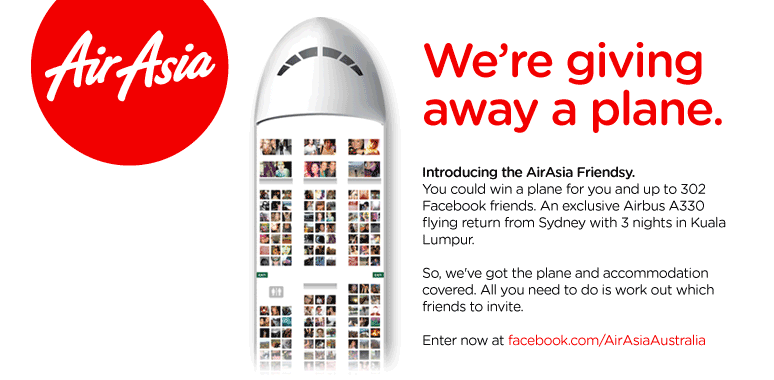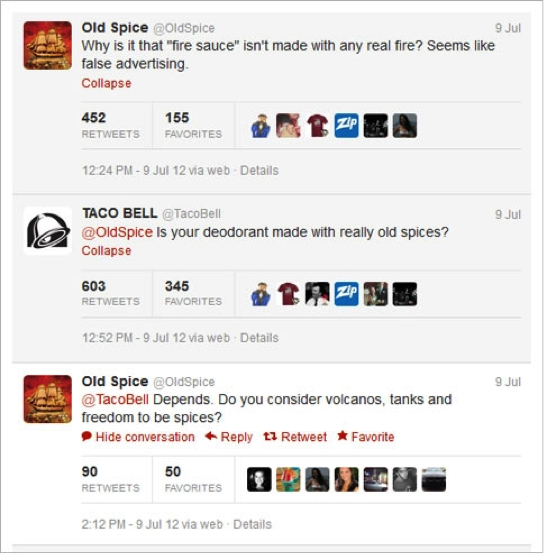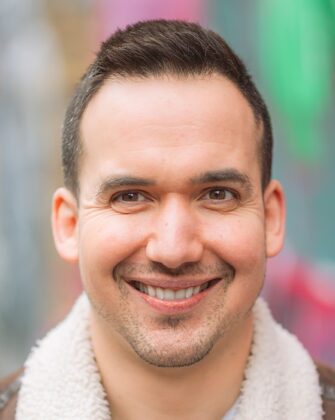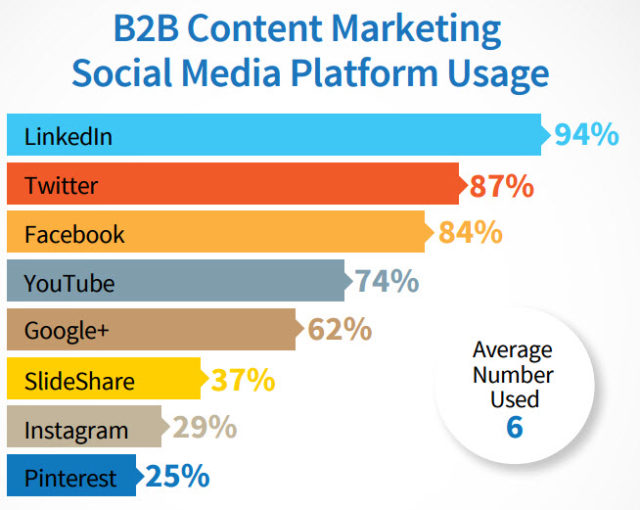From a single Tweet that created a $250,000 deal, to raising £8 million in one week for charity, social media can be used to create real opportunities for your business. Like any other field, the best way to learn is by studying the success of others. For this reason, I have put together my top 5 social media campaigns. If these 5 case studies aren’t enough for you, Susan Hallam has also described a series of very practical B2B case studies.
Social media was created for SMEs. These free social networks are perfect for marketing on a budget. That said, I have included some examples of much larger companies who really do win at social media. I have highlighted the principles they are applying which are so universal you can take them home and reap the benefits yourself.
The final case study is that of a hairdresser who increased sales by 400% without spending a penny. This case study highlights crucial strategy for all small businesses who want results from social media. Like all good things, I have this till kept last so you will have to read all the other case studies first! Every case study here has something that you can learn from, but in case you are too lackadaisical to read a whole article ( I know I am), I have super-condensed these social media case studies into the following top tips.
- Give stuff away if you want to get stuff back
- Interact with influential individuals/brands to maximise your reach
- Piggyback off trends
- Go to where your customers are and listen
- Create a winning strategy and follow it.
In the first campaign, they gave away a free plane*…… Lets take a look at how this strange strategy worked to their advantage.
1) Air Asia – Friendsy
What problem did they face?
Air Asia are a small, previously unknown Malaysian Airline looking to launch a new flight from Australia. They were up against fierce competition but lacked the budget to compete with an effective advertising campaign. They needed to raise brand awareness and fast…..
How did they overcome their problem?
They launched a Facebook campaign to give a way a free plane. Well, *nearly a free plane…. Air Asia created a competition whereby the winner could choose 302 of their Facebook friends to fly with them free from Australia to Malaysia ( and presumably back again…). The competition allowed you to choose what friends to take with you and tag them in the seating plan. A snapshot would then be shared with the tagged friends ( see room for some serious viral potential?).
- Doubled the amount of flights
- Grew Facebook fan base by 30%
- Generated PR worth an estimated $1.5 million
- Reached over 2 million people on Facebook.
Why did it work?
So what can you take away from this? Why should you care?
- Massive viral potential
- Gives something valuable away for free.
- Harnesses the principle of reciprocity
- Highly social – makes people want to get involved.
Top Tip #1: Use competitions to gain a following.
Gaining a following is great for cultivating a relationship with your customers. But it does it affect the bottom line? In a recent case study it was found that Facebook fans on average spend 24% more then non-fans, and are more likely to come back for more. Give aways in competitions are great for gaining a following due to their viral potential, but not all brands rely on this method. Sometimes, just being a good conversationalist helps….
2) Taco Bell – Twitter
Taco Bell. Who would of thought an American company pretending to be Mexican would make for such good social media frivolities. Taco Bell used Twitter to chat to other brands and in doing so gained a huge following…..
What problem did they face?
Taco bell had low engagement across their social media channels. Not only that, their Twitter campaign had a lot less followers then other large brands. For brands like Taco Bell, customer loyalty and retention is incredibly important. They want a massive following to enable them to broadcast their messages widely to maintain a positive brand image. In order to do this, Taco Bell had to re-engage. They needed to schmooze their current followers and gain a big bag of new ones.
How did they overcome it?
Taco Bell began conversations with users who have over 10,000 followers. This tactic maximises the number of potential brand mentions, recommendations and re-tweets as they are targeting the most influential people on Twitter. Cleverly, Taco Bell adopted a light-heated and colloquial tone. This was essential in humanising what could be seen as a large corporate megalith into a playful, charming little brother. This human authenticity fused with a touch of humour is essential for success in social media. Finally, Taco Bell used trending hash tags to target threads that would give them a further reach and maximize their potential audience.
Take a look at this Twitter exchange between Old Spice and Taco Bell as an example:
Old Spice did well out of this exchange as well. 90 re-tweets and they have made me want to smell like volcanoes and freedom…..
This simple Tweet got 603 re-tweets and promoted a friendly, laid back Taco Bell. The value of these interactions in the long term is intangible yet highly valuable.
What were the results?
- Reached over 600,000 Twitter followers
- Achieved over 3000 retweets from a single tweet
- Increased Twitter followers to 3 times that of Burger King
Why did it work?
Why are Taco Bell successful on Social Media? What can we learn from their success?
- Proactive engagement with fans, followers and brands in real time.
- Interact with influential individuals giving a maximum reach.
- Humanising – authentic interactions to “de-corporafy” their brand
- Qualitative over Quantative. They are developing high quality relationships with their followers.
Top Top #2 : Interact with influential brands and individuals to get a maximum reach. Be authentic and human to build a positive brand image.
I’m not a fan of the word selfie. Quite frankly, it sounds like a silly word. Also, it carries the odour of narcissism so strong it can only be covered up with a healthy dose of Old Spice’s volcano-y spray. That said, the following campaign used the selfie to raise a staggering amount of money for charity, a feat that is as commendable for its philanthropy as it is for its apparently accidental genius.
3) Cancer Research – No Make Up Selfie
This year cancer research raised a colossal £8 million pounds through the “No Make Selfie” social media campaign. Interestingly, this somewhat accidental campaign was not organised by Cancer Research. 18 year old Facebook user Fionna Cunningham was inspired to create the original page after watching Kim Novak receive an award at the Oscars without make-up. So what made this campaign so successful?
What did they do?
Fionna started the campaign by simply asking women to post photos of themselves on Facebook without wearing makeup for cancer awareness. Crucially, she asked them to use the hashtag “#nomakeupselfie”. Momentum began building and people started asking Cancer Research whether the campaign was theirs. Cancer research responded by posting their own no make-up selfie (below), saying that they loved the sentiment and provided a number for participants to donate to. 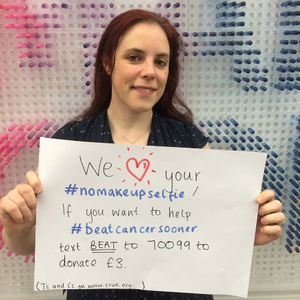 Within just a few hours tens of thousands of people shared the post on social networks. TV, radio and online news articles began reporting the viral phenomenon and repeated the donation code. Within a week Cancer Research had raised over £8 million. All this publicity was started by one girl and her invertible camera. Imagine what you could do for your business if you put your mind to it……
Within just a few hours tens of thousands of people shared the post on social networks. TV, radio and online news articles began reporting the viral phenomenon and repeated the donation code. Within a week Cancer Research had raised over £8 million. All this publicity was started by one girl and her invertible camera. Imagine what you could do for your business if you put your mind to it……
What were the results?
- 826,000 Facebook likes
- 140,000 Followers on Twitter
- 8 Million raised in donations in 1 week
- 10 more clinical trials able to take place
If just one of those clinical trials is successful then 18 year old Fionna Cunningham would of cured cancer with a selfie. Remember that ridiculous hyperbole next time you think social media is a waste of time…..
Why did it work?
The enormous success of the no make selfie is multifaceted and reaches beyond this author. That said, a lot of the success centres around the principle social piggybacking. Piggybacking is the process of using a popular trend or cultural Zeitgeist to extend the reach of your message beyond its usual parameters. For example, Fiona’s original campaign leveraged the publicity surrounding Kim Novaks oscar appearance to start the momentum. Subsequently, Cancer Research piggybacked off the #nomakeupselfie hash tag by launching their own campaign. The success that followed can be partly attributed to the surrounding cultural conditions, with participation being perceived as defying cultural norms. So why did this work and what practical tips can we take away ?
- #Piggybacking of hash tags
- Piggybacking off popular culture trends
- Being charitable and appealing to peoples higher nature
- Highly participatory – people like posting about themselves (especially if its seen as altruistic)
- Highly viral – participants are asked to nominate friends
Top Tip #3 Piggyback off Hash Tags
We have two ears and one mouth and should use them accordingly. Even especially when online….
4) Avaya – Social Listening
Avaya used one tweet to set up a six figure deal. How? Keep reading…..
What problem did they face?
Like all companies, Avaya wanted more leads. They also would like to better understand their customers perceptions of them. To achieve these goals Avaya began harnessing the power of social listening, that is, listening to conversations on social channels such as Twitter, Facebook and blogs/forums. As the number of brand mentions went from 1000 to 2,500 weekly this became a very time consuming task. Avaya were forced turn to social listening tools for some extra fire power….
How did they overcome their problem?
They listened. Avaya monitored all social media mention – not just brand names, but also conversations, competitor names and product names. They tailored their responses to these comments without any automation to provide customisation. Every week Avaya would interact with large numbers of their customers through social media and answer a wide variety of questions. Through active listening Avaya are able to identify potential sales opportunities, so when the following Tweet was broadcast, Avaya were ready.
“shoretel or avaya? Time for a new phone system very soon”
Avaya saw this tweet and replied with an invitation to an “objective” phone call with one of their agents. 13 days later they closer a $250,000 sale…..
What were their results?
- A $250,000 sale
- A loyal fan base
Avaya sees potential issues before they even arrive. Because of this, not only can they close sales deals, they can also keep current customers happy. In the long run this could profit them to a much greater extent then one singular sale.
Why did it work?
- Listening more then talking – try broadcasting endless sales messages, it doesn’t work.
- Personalised responses
- Utilised social listening tools
- Went to where their customers were
Avaya had deep and pervasive conversations with as many people as possible. Through this they were able to build a better brand and deeper relationships with their customers.
Top Tip 4 #: Go where your customers are and listen!
You may now be thinking “all this social media talk is great, but I don’t have a plane to give away! Why are you telling me this?” The principles of all these above examples can be applied to an SME. In fact, social media is perfect an SME on a small marketing budget. To prove it, I will give you what you have all been waiting for – the SME who wins at social media marketing on a budget…
5) Emerson Salon – Winning at Social Media
Emerson Salon are a small hair dressers based in Washington. They are the typical SME and have used social media to get amazing results. Lets take a look at how they did it.
What problem did they face?
Two Washington based entrepreneurs decided to buy and renovate a hair dressers based in Washington. After buying the premise and spending $40,000 on decoration, they were understandably short on pennies. Unable to spend any on a marketing campaign, they got social media savvy. They created a full strategy, from website to Facebook fan page.
How did they overcome their problems?
They developed an integrated social media strategy. At the centre of this strategy was their blog and website that was used to generate great content. The Facebook fan page and Twitter account then drove traffic to both the blog and the website. It looked a little a bit like this ( put presumably not drawn in paint) 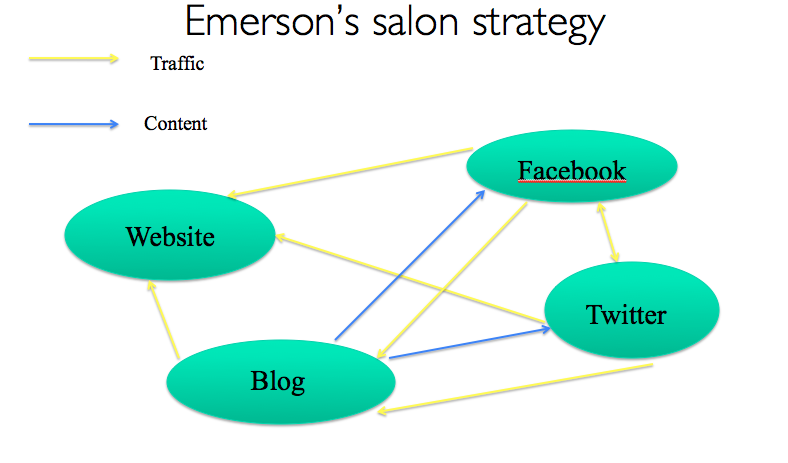 Emerson used Facebook and Twitter to share articles from their blog which in turn drove traffic back to their website. They asked customers for feedback and offered discounts. They kept conversations alive by replying with urgency to messages. Basically, they followed social media marketing best practice to a tee. And what happened? They were rewarded for their hard work! What were their results?
Emerson used Facebook and Twitter to share articles from their blog which in turn drove traffic back to their website. They asked customers for feedback and offered discounts. They kept conversations alive by replying with urgency to messages. Basically, they followed social media marketing best practice to a tee. And what happened? They were rewarded for their hard work! What were their results?
- 13,818 Twitter followers
- 1780 likes on Facebook
- 75% of clients come from the internet
- 400% increase in revenue over 2 year period
Why did it work?
- Clear calls to action on their website – with a large “book online button”
- Clear social signals on website homepage
- Clearly defined target audience – allowed them to develop their company “voice”
- Engaged with customers authentically
- Asked for feedback
- Posted interesting content from their blog
- Followed a clear strategy
Top Tip 5 #: Create a winning strategy and follow it!
This real case study of an SME winning at social media marketing shows that anyone can reap the benefits of social media. You pluck the principles used by larger companies, mix in a bit of ingenuity, add a little authenticity, and then apply it to your own business. Most importantly, be original, be useful and reach out to people. Trust me, you will be surprised at the results…….

